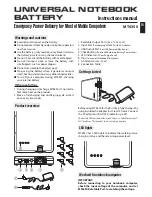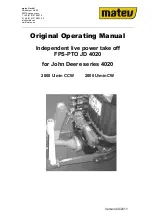
5
g) Position the ET Sensor where it can be reached for occasional ser-
vice. The rain gauge should be checked and cleaned once a month
during the warmer months, to ensure that it is free of debris.
h) Avoid mounting sensor near any high intensity light, heat or infra-
red sources as this may add excess ET amounts over time.
The ET Sensor is designed to adapt to steel fence poles (mounting
adapters included, requires 2 x 2"/50mm
2
U-bolts), 4x4"/100mm
2
(or
larger) posts, or eaves or walls.
Metal poles or weather-treated wooden posts are preferred, since
ET measurements will be somewhat less accurate if the sensor is
wall or eave-mounted.
ET Sensor Wiring
Before mounting the ET Sensor, connect the wires to the terminal
strip. This operation is much easier on the ground, prior to mounting
the sensor.
Locate the wiring compartment cover on the bottom of the ET Sensor.
This is a trap door, secured with 2 screws. Remove the wiring com-
partment door screws and set in a safe place, and remove the wiring
compartment door.
Locate the screw terminal strip. Connect the two long conductors
(green and black) to the appropriately labeled terminals.
If an ET Wind Sensor is to be installed, this is also the time to con-
nect the wires.
Prevailing Wind Compensation
If ET Wind will not be connected,
a factor for average prevailing
Average Wind Factor Settings. Switch #4 is not used, and position does not matter.
Avg. Wind
1mph
2mph
3mph
4mph
5mph
6mph
7mph
DIP setting
1.6kph
3.2kph
4.8kph
6.4kph
8kph
9.6kph
11.2kph
SW 1
On
Off
On
Off
Off
Off
On
SW 2
Off
On
On
Off
Off
On
On
SW 3
Off
Off
Off
On
Off
On
On
ON
1 2 3 4
1 2 3 4
1 2 3 4
1 2 3 4
1 2 3 4
1 2 3 4
1 2 3 4
OFF
Green and
Black Wires
Blue Wire
White Wire
(ET Module)
(ET Wind only)
ET Wind
Содержание ET System
Страница 4: ...D 2 A B C E ...








































